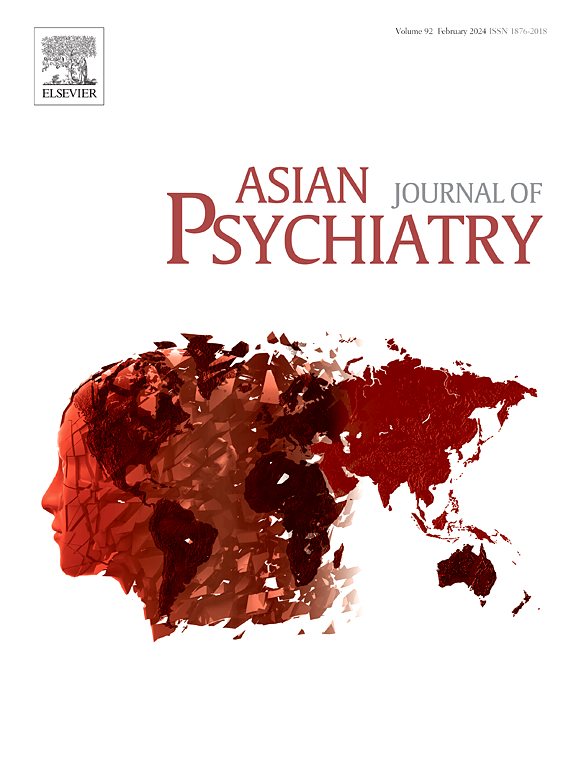Cannabis and suicide risk in first-episode psychosis: Mechanisms, interactions, and intervention strategies
IF 4.5
4区 医学
Q1 PSYCHIATRY
引用次数: 0
Abstract
Cannabis use represents a significant risk factor for both psychotic disorders and suicidal behaviors, with growing evidence suggesting complex interactions between these variables. This systematic review examines the relationship between cannabis use and suicide risk in first-episode psychosis (FEP) patients, and explores underlying mechanisms, moderating factors, and intervention strategies. Following PRISMA guidelines, we analyzed 50 studies involving 12,764 FEP patients. Results demonstrate that cannabis use, especially high-potency cannabis used regularly, is associated with significantly increased suicide risk with studies consistently reporting elevated odds ratios (ranging from 1.43 to 1.84), and dose-dependent effects—daily use showing higher risk (studies reporting OR: 2.73, 95 % CI: 1.89–3.94) and high-THC cannabis carrying greatest risk (OR: 3.12, 95 % CI: 2.11–4.62). Multiple mechanisms mediate this relationship: neurobiological alterations in the endocannabinoid system, exacerbation of depressive symptoms, impaired cognitive functions, increased duration of untreated psychosis, and reduced treatment adherence. Key vulnerability factors include early-onset cannabis use (before age 15–16), female gender, history of childhood trauma, and comorbid psychiatric disorders. Critical high-risk periods were identified, particularly the first month after treatment initiation and following hospital discharge. Effective intervention strategies include integrated early intervention programs combining pharmacological treatment with psychosocial approaches, specifically cognitive-behavioral therapy, motivational interviewing, and family interventions. Emerging evidence suggests potential therapeutic benefits of CBD and specific risk management protocols. This review highlights the clinical importance of assessing cannabis use patterns in FEP patients and implementing targeted interventions during critical periods, particularly given the increasing availability of high-potency cannabis products globally.
大麻和自杀风险在首发精神病:机制,相互作用,和干预策略
大麻的使用是精神病和自杀行为的重要危险因素,越来越多的证据表明这些变量之间存在复杂的相互作用。本系统综述探讨了大麻使用与首发精神病(FEP)患者自杀风险之间的关系,并探讨了潜在的机制、调节因素和干预策略。根据PRISMA指南,我们分析了涉及12764例FEP患者的50项研究。结果表明,大麻的使用,特别是经常使用的高效大麻,与显著增加的自杀风险相关,研究一致报告了较高的比值比(范围从1.43到1.84),剂量依赖效应-每天使用显示更高的风险(研究报告OR: 2.73, 95 % CI: 1.89-3.94),高thc大麻风险最大(OR: 3.12, 95 % CI: 2.11-4.62)。多种机制介导了这种关系:内源性大麻素系统的神经生物学改变、抑郁症状加重、认知功能受损、精神病未治疗持续时间延长和治疗依从性降低。主要的易感因素包括早发性大麻使用(15-16岁之前)、女性、童年创伤史和共病精神障碍。确定了高危期,特别是开始治疗后的第一个月和出院后。有效的干预策略包括综合的早期干预计划,将药物治疗与社会心理方法相结合,特别是认知行为治疗、动机性访谈和家庭干预。新出现的证据表明CBD和特定风险管理方案的潜在治疗益处。这篇综述强调了评估FEP患者的大麻使用模式和在关键时期实施有针对性的干预措施的临床重要性,特别是考虑到全球高效大麻产品的供应日益增加。
本文章由计算机程序翻译,如有差异,请以英文原文为准。
求助全文
约1分钟内获得全文
求助全文
来源期刊

Asian journal of psychiatry
Medicine-Psychiatry and Mental Health
CiteScore
12.70
自引率
5.30%
发文量
297
审稿时长
35 days
期刊介绍:
The Asian Journal of Psychiatry serves as a comprehensive resource for psychiatrists, mental health clinicians, neurologists, physicians, mental health students, and policymakers. Its goal is to facilitate the exchange of research findings and clinical practices between Asia and the global community. The journal focuses on psychiatric research relevant to Asia, covering preclinical, clinical, service system, and policy development topics. It also highlights the socio-cultural diversity of the region in relation to mental health.
 求助内容:
求助内容: 应助结果提醒方式:
应助结果提醒方式:


